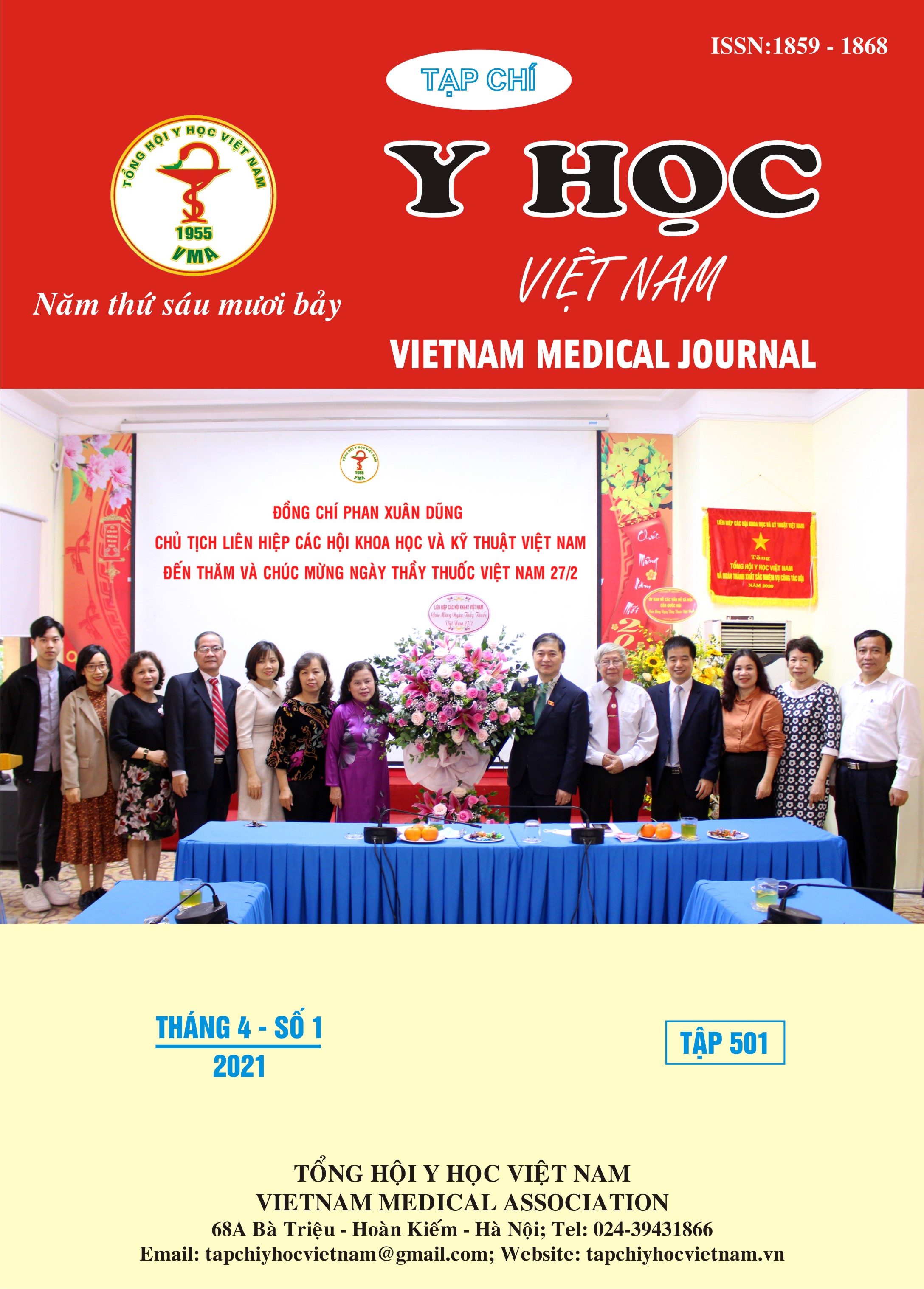KẾT QUẢ ĐIỀU TRỊ CHẢY MÁU DƯỚI NHỆN DO VỠ PHÌNH ĐỘNG MẠCH VỠ TẠI BỆNH VIỆN VIỆT ĐỨC
Nội dung chính của bài viết
Tóm tắt
Mục tiêu: đánh giá kết quả điều trị chảy máu dưới nhện do phình mạch vỡ. Đối tượng và phương pháp nghiên cứu: Nghiên cứu hồi cứu 47 bệnh nhân được chẩn đoán và điều trị chảy máu dưới nhện do phình mạch vỡ tại bệnh viện Việt Đức từ 6.2019 đén 9.2020. Kết quả: tuổi trung bình của bệnh nhân 46,4; nam giới: 42,55%; đau đầu, buồn nôn, liệt nửa người là các triệu chứng thườn gặp với tỉ lệ 100%, 85,1% và 36,17% tương ứng. 12,77% số bệnh nhân có đa túi phình; kết quả cải thiện rõ rệt 3 tháng sau điều trị. Kết luận: Điều trị chảy máu dưới nhện do phình mạch vỡ vẫn còn là một chủ đề phức tạp, dù đã có nhiều hiểu biết và tiến bộ.
Chi tiết bài viết
Từ khóa
chảy máu dưới nhện, phình mạch vỡ
Tài liệu tham khảo
1. Hemphill, J.C., 3rd, et al., Guidelines for the Management of Spontaneous Intracerebral Hemorrhage: A Guideline for Healthcare Professionals From the American Heart Association/American Stroke Association. Stroke, 2015. 46(7): p. 2032-60.
2. Connolly, E.S., Jr., et al., Guidelines for the management of aneurysmal subarachnoid hemorrhage: a guideline for healthcare professionals from the American Heart Association/american Stroke Association. Stroke, 2012. 43(6): p. 1711-37.
3. Frontera, J.A., et al., Prediction of symptomatic vasospasm after subarachnoid hemorrhage: the modified fisher scale. Neurosurgery, 2006. 59(1): p. 21-7; discussion 21-7.
4. Etminan, N., et al., Worldwide Incidence of Aneurysmal Subarachnoid Hemorrhage According to Region, Time Period, Blood Pressure, and Smoking Prevalence in the Population: A Systematic Review and Meta-analysis. JAMA Neurol, 2019. 76(5): p. 588-597.
5. Katsuno, M., et al., Subarachnoid hemorrhage caused by ruptured posterior inferior cerebellar artery aneurysm arising from the extracranial portion of an anomalous vertebral artery. Neurol Med Chir (Tokyo), 2012. 52(7): p. 499-501.
6. Togha, M., et al., Warning signs and symptoms of subarachnoid hemorrhage. South Med J, 2009. 102(1): p. 21-4.
7. Kaminogo, M., M. Yonekura, and S. Shibata, Incidence and outcome of multiple intracranial aneurysms in a defined population. Stroke, 2003. 34(1): p. 16-21.
8. Yao, Z., et al., Timing of surgery for aneurysmal subarachnoid hemorrhage: A systematic review and meta-analysis. Int J Surg, 2017. 48: p. 266-274.


